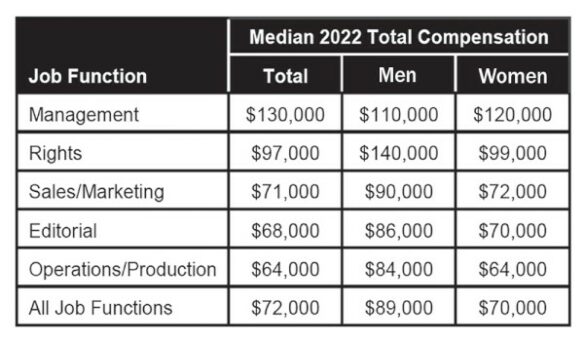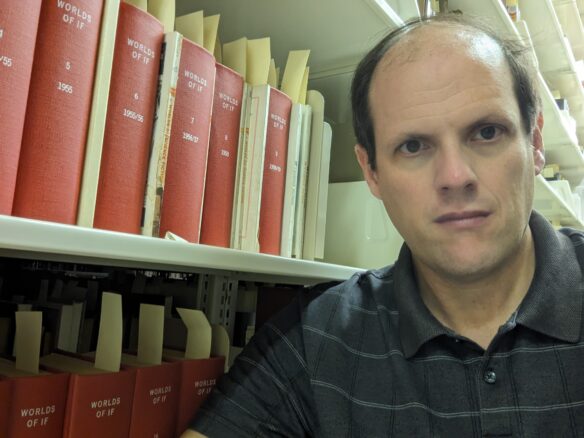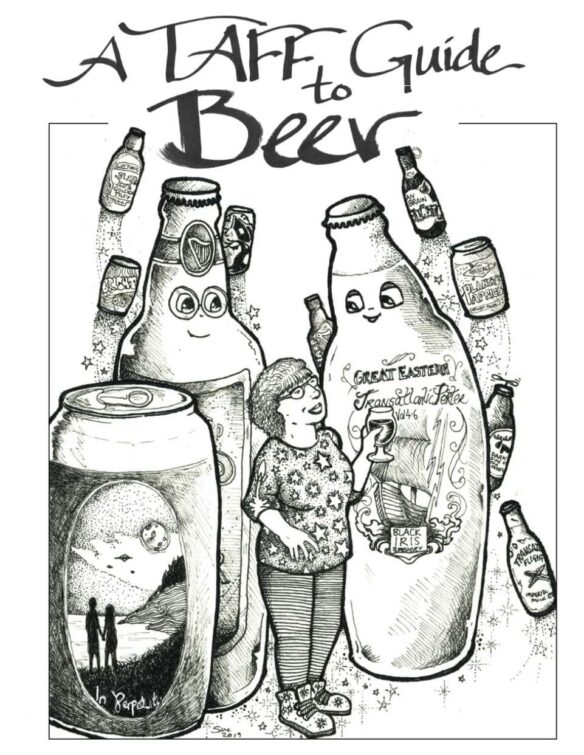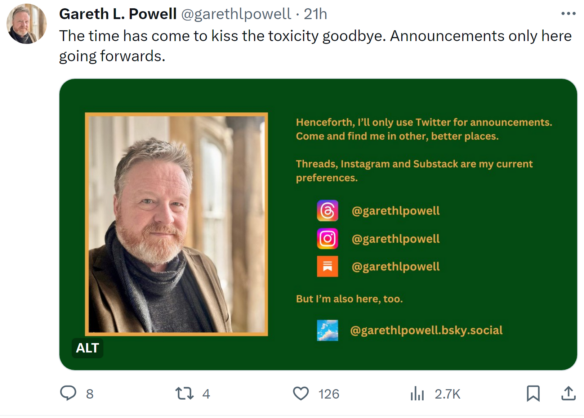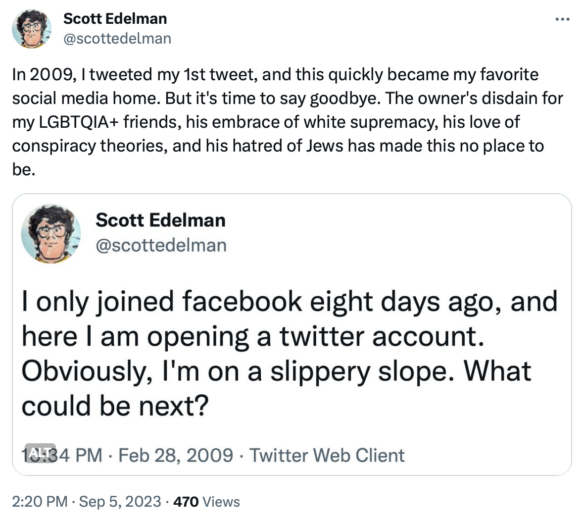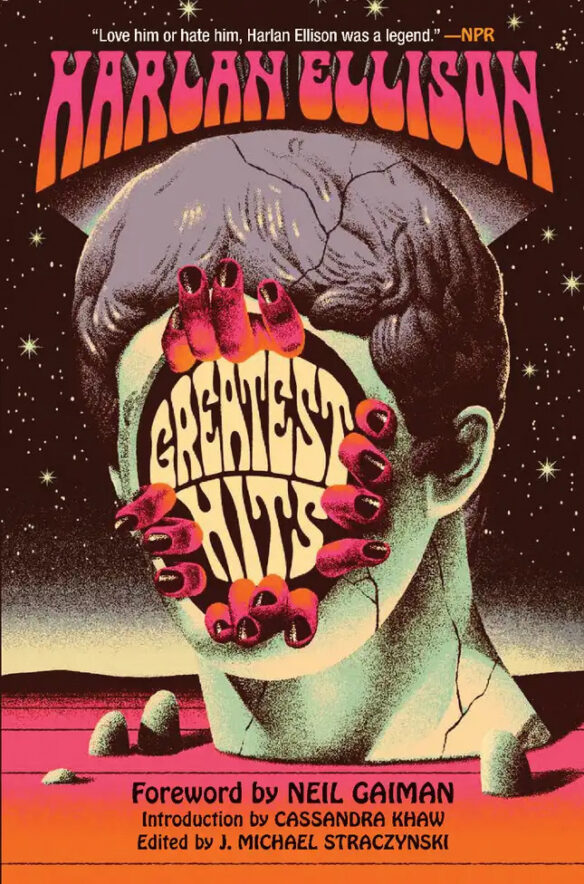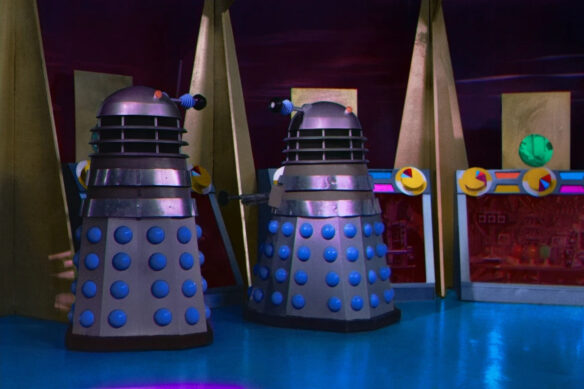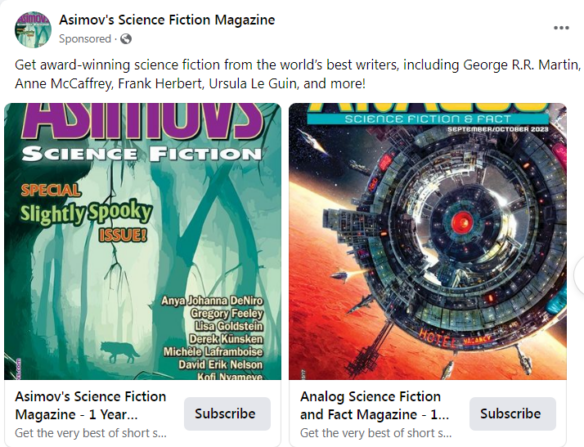(1) R’LYEH AND PUPPIES. Francis Gooding’s review of The World We Make includes comments placing it in recent genre history: “Slimed It: On N.K. Jemisin” in The London Review of Books.
…The backstory to this battle with Cthulhu was widely covered when The City We Became first appeared. It stretches back to 2011, when the Nigerian American writer Nnedi Okorafor won the World Fantasy Award for her novel Who Fears Death. The prize came with a trophy – an ugly sculpture of Lovecraft’s head – and Okorafor wrote a thoughtful, measured blog post about her conflicted feelings on getting the award, having discovered just how racist Lovecraft was. A petition was drawn up to have the Lovecraft trophy replaced, and there was something of a furore in the sci-fi and fantasy community about what to do with Lovecraft now that, belatedly, his influence and reputation had to be squared with his racism.
The debate that followed had the disheartening outlines familiar from other culture war clashes of the time. A reactionary bitterness at progressive political gains came to the surface, a sure sign of festering prejudice. A few years later, that lurking ressentiment assumed a more active form: a concerted effort by two organised groups of authors and fans (known as the ‘Sad Puppies’ and ‘Rabid Puppies’), to skew the public nomination process for the prestigious Hugo Awards in sci-fi publishing. In response to a perceived bias in favour of the liberal left in all its manifestations – Black and brown people, women, novels with progressive themes (‘boring message fic’), gay writers and so on – the Puppies flooded the nominations with their own picks. Some of the people involved were connected to the then ascendent alt-right, and racist abuse was aimed at Jemisin herself. But though the campaign succeeded in souring the atmosphere, it didn’t achieve its desired result: in 2016, on a slate dominated by the Puppies’ astroturfed nominees, Jemisin won the Hugo for best novel with The Fifth Season, the first book in her Broken Earth trilogy. She was the first Black writer to win the award. Both the book’s sequels, The Obelisk Gate and The Stone Sky, won the Hugo in subsequent years; a fourth Hugo followed in 2019 for the novella Emergency Skin.
The alt-right of the 2000s and early 2010s was preparing the ground for the subsequent radicalisation of the mainstream. The neofascist ideologies that once lurked in the subcultural margins have since become the basis of the ‘war on woke’, as an endless succession of manufactured outrages have bound small-c conservatives ever more tightly to what were once outré far-right positions. The eldritch bullshit that turbo-charged the Trump era wasn’t put back in its box. Jemisin evidently felt there was unfinished business. ‘The City Born Great’ was a knowing literary confrontation with the noisy and reactionary elements in the sci-fi community for whom Lovecraft remains talismanic.
In the novels, New York’s initial scrap with the Enemy expands to take in wider, ongoing struggles. Lovecraft, however, remains elemental. It eventually emerges that the Enemy is the personification of R’lyeh, the lost city from Lovecraft’s ‘The Call of Cthulhu’. Lovecraft’s stories often feature dead, inhuman cities from an unfathomably ancient past. Jemisin’s cities are the opposite, alive and defiantly human – real people, right now. And Jemisin makes sure to embody them in just the sort of people Lovecraft loathed. All the boroughs (bar Staten Island) are Black, Asian or Indigenous; and Manhattan, Queens, the Bronx and New Jersey – later an honorary sixth borough – are gay or queer…
(2) PERSONAL FAVORITE WHO MOMENTS. “’My favourite moment is me … not in a big-headed way!’ Stars share their best Doctor Who memories – part four” in the Guardian.
Neve McIntosh (played Silurians, including Madame Vastra, 2010-2014)
The episode A Good Man Goes to War was so special because they’d killed me off twice before and I was amazed to be asked back, as a goodie not a baddie, with Catrin Stewart as my fabulous kick-ass wife and brand new friend and stunt potato Dan Starkey! The best bit was filming the dematerialisation. The director cries “freeze!”. We are still as statues, two guys from the art department run out and flat-pack the Tardis, then, “action!”, and we all react to the Doctor disappearing off to a new adventure! Of course Madame Vastra is blase about it all but inside I was bursting with delight!
(3) WORKING HER WAY BACK. Writer Kelly Barnhill tells “How a Traumatic Brain Injury Changed Me” in an opinion piece for the New York Times.
[Ms. Barnhill is the author of “The Ogress and the Orphans.” She experienced a traumatic brain injury in 2021.]
I’ve been trying to write this essay for a very long time. Months, I think. Or maybe even longer, before I ever mentioned it to anyone, before I let anyone know that I was even capable of multiple sentences again. When all I could muster writing was a single sentence on a note card. My brain works differently now than it used to, and differently than I feel that it ought to. I told my speech therapist that I was frustrated that I haven’t been able to write fiction since experiencing a traumatic brain injury — which means that I am still, after nearly two years, unable to do my job.
He nodded with practiced care. “That must feel frustrating,” he said. “But maybe it’s important to focus on what you can do.”
Which is fair, I suppose. But I still wanted to clock him.
Healing from any injury is a process of rebuilding cells and tissues and structures — taking that which is broken and making it new again. Healing a brain injury is the process of rebuilding not only tissues and cells and the connections between those cells, but also memory, thoughts, imagination, the fundamentals of language and our very concept of ourselves.
I am rebuilding myself, you see. Right now. Sentence by sentence.
In December 2021, just a few months before the publication of two of my novels, “The Ogress and the Orphans” and “When Women Were Dragons,” I took a colossal spill down the stairs.
My husband heard me holler and found me in an unconscious heap. I remember none of this. It’s strange not remembering the moment that changed my life, that altered my work and vocation, that disrupted the me-ness of me. I think, though, that my body remembers it, even if I do not. A chaos of movement. A scramble through space. A short, sharp knock at the back of my head. And then a thunderous dark….
The piece discusses the many changes to her life and the challenges in recovery, and ends:
…But lately, I’ve had dreams of writing. I wake up in tears. What story was I writing? No idea. But each neuron shoots forth messages into the dark. A small candle. A lighthouse at the edge of a stormy ocean. I exist. I saw this. Felt this. Know this. Am this. Meanwhile, my sentences have grown. I’ve taken to using larger index cards. Sometimes I go as far as a steno pad. A full sheet of paper is too much — my eyes can’t track it very well. I get lost. I need something small and contained, where I can fit pretty words into a pretty sentence and allow them to become more than themselves.
Recently, I wrote a story. Only six sentences long, but a story nonetheless. With a character, a place and the passage of time. An opening, a turn, a conclusion. Such a small thing, a tiny accomplishment. And yet. I stared at the card for a long time, utterly astonished.
(4) DETAILS OF SERGEY LUKYANENKO’S DECEMBER BOOK TOUR IN CHINA. [Item by Ersatz Culture.] Further to the File 770 post on November 12, Sergey Lukanenko’s visit to China in December has now been publicly announced on Chinese social media. That Weixin/WeChat piece describes him as a GoH of the 2023 Chengdu Worldcon (2023成都世界科幻大会荣誉主宾), despite his non-appearance then.
He will be making four appearances in Chengdu between December 1st and 4th, two in Beijing on the 7th and 8th, and a final one in Shanghai on the 10th. Three organizations are listed as event co-hosts:
- Chengdu-based publisher 8 Light Minutes Culture (their announcement on Weibo, which also namechecks him as a Chengdu Worldcon GoH, and which in turn links to another Weibo page which seems to have the same content as the WeChat/Weixin page).
- New Star Press
- The Chengdu Science Fiction Society/Association (成都科幻协会, which for some reason has the acronym CSFC). This is the organization that is/was in charge of the Chengdu Worldcon.
The announcement also indicates a number of people will be appearing alongside Lukyanenko at some of the events:
- Yao Haijun – deputy editor-in-chief of Science Fiction World, Hugo finalist and member of the Chengdu concom
- Jiang Zhenyu – member of the Chengdu concom
- Baoshu – writer of a Three-Body Problem sequel, amongst other works
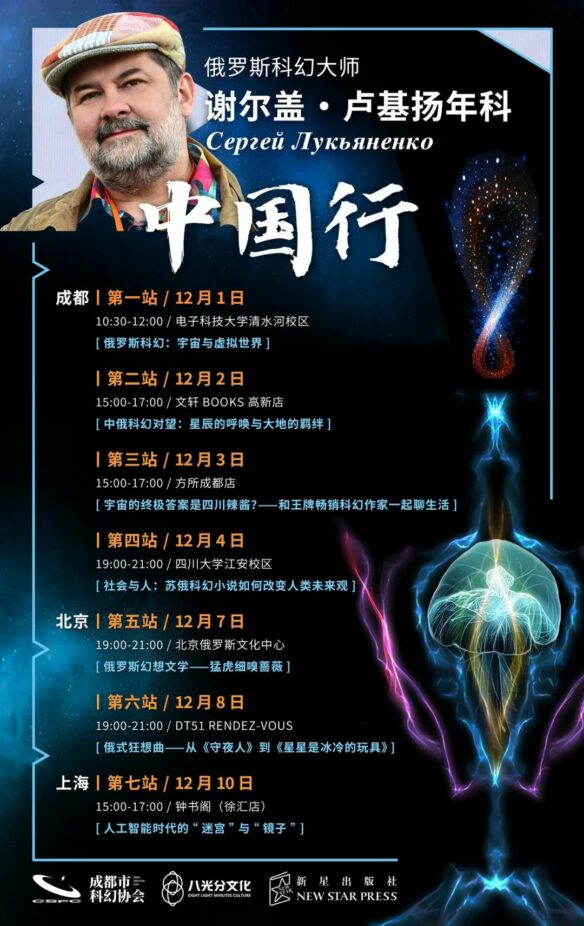

(5) ILYA SAYS, ‘OPEN CHANNEL BEEB…’ [Item by SF Concatenation’s Jonathan Cowie.] There has been a lot the past week on BBC Radio 4 or the Home Service as I like to call it, of likely interest to Filers (and indeed SF² Concateneers)…
This month’s Open Book has a substantive section on book banning in the USA (“Bestselling novelist Michael Connelly talks about his response to the ongoing campaigns banning books in American school libraries.”) We do not have this problem to such a degree over here in Brit Cit but, from coverage in File770, it is clearly a substantive issue in the US mega-cities and especially the Cursed Earth. You can listen to the programme here.
Doctor Who is 60 this year and some of us in Brit Cit remember its first episode, peering out from behind the sofa. Anyway, the BBC has a number of programmes to mark this special anniversary. One of these was Doctor Who: The Wilderness Years that looked at why the original series ended and what happened over the years when the show was not on our screens.
In December 1989 – after 26 years on TV, 694 episodes and seven different Doctors – Doctor Who, the longest running series in the history of British television, was quietly exterminated by the BBC. It remained off air for 16 years until the series was revived in 2005, quite spectacularly under the auspices of Russell T Davies with Christopher Eccleston as the Time Lord. But the period between 1989 and 2005 was a very special interregnum. Known as the Wilderness Years, they belonged to the true keepers of the flame, Doctor Who fans – and never had a wilderness proved so fertile.
You can listen to the programme here.
iPromise was a cyberpunk stand-alone radio play about a hacker hired by not nice people to break into a quantum computer so as to get at cryptocurrency….
A quantum cryptocurrency audio heist movie and psychological tech thriller exploring the illusory nature of money itself. Bit – real name Rebecca “Becky” Isobel Troughton, BIT, get it? – is in trouble. Big trouble. She’s only gone and hacked into US mainframes and brought the entire eastern seaboard to a standstill. And now she’s on everybody’s Most Wanted list. But Bit is no hacking ‘gun for hire’. She’s driven by principle and she’s the very best at what she does. So when shady government organisations come knocking in a bid to secure her services, she just sends them packing. Well, sort of. .
You can listen to the play here.
Spores is a five-part SF series. Mysterious glowing fungi appear in a house. Father and son are exposed to its spores. The father becomes unresponsive and the mother takes it upon herself to get out with her son and go camping. But did they get away in time…? You can listen to episode one here; episode two here; episode three here; episode four here; episode five here.

(6) SF2C EXITS X. [Item by SF Concatenation’s Jonathan Cowie.] I see that a load of folk are leaving Twitter or X or whatever it is these days. Actually, SF² Concatenation left Twitter a few months ago after the Musk takeover. We only used Twitter for site alerts and not chat, and found only a handful of folk signed up to our account. But I had kept it going for those few die-hard followers, sometimes treating them to some early releases before they were announced on our various indices pages. The thing is that that account, @SF2Concat, was set up ages ago using a now defunct e-mail address.
One of the first things Musk did was to insist on strengthening passwords blocking accounts – such as ours – that did not have a password that included a number, symbol and Klingon hieroglyph. To get our account back, I’d have to give Twitter an extant e-mail address. Those that know me are aware that I really hate to sign up to anything (so, for example, for the first time since 1979 I will not be on the science programme of next year’s British Worldcon – Less work for me, so that’s a plus.)
Anyway, seeing the writing on the wall what with Musk’s apparent support of Trump’s ramblings, I decided not to continue with Twitter. The account is still there for future digital archaeologists.
For those wanting alerts, the wonderful Caroline frequently posts something on the BSFA Facebook page (last season edition alert here) which I mention because the BSFA is a worthy page to follow for a plethora of other reasons. And if you are on FB I give a shout out to one of Brit Cit’s local SF group pages North Heath SF.
(7) LET’S FIX THAT RIGHT UP. Artnet analyzes how “A Prankster Used A.I. to ‘Improve’ Edward Hopper’s Classic ‘Nighthawks’”.
The rise of artificial intelligence has created reams of new artworks, many of them generated, controversially, on the backs of artist’s existing pieces. Now, one X (formerly Twitter) user has shown a way that A.I. can offer “improvements” to classic works of art, starting with Edward Hopper’s Nighthawks, and even one of the art world’s most beloved critics may have fallen for the gag.
“Using AI, I was able to take some old painting and make it better,” posted X user Sonch (@soncharm) last week, sharing a jpeg of Edward Hopper’s famous scene of urban ennui, Nighthawks from 1942, how housed in the Art Institute of Chicago. “Where even is this? Who are the people? Huh? You’re too far away to really see the setup. Whole left side blank. Nothing here to grab onto,” Sonch complained….
Click on tweets for larger images.
(8) TODAY’S BIRTHDAYS.
[Written by Cat Eldridge.]
Born November 24, 1948 — Spider Robinson, 75. Spider’s an American-born Canadian citizen who’s one of my favorite writers and individuals to boot.
This is not a complete listing of what he’s written, just my experiences with him and what I think should be commented upon.
I wasn’t surprised to discover that his first sale, “The Guy with the Eyes”, published by Analog in February 1973, was one of his Callahan stories. Four years later, he released Callahan’s Crosstime Saloon, a collection of Callahan short stories. These stories, and the later novels, make frequent reference to the works of mystery writer John D. MacDonald’s Travis McGee stories.
I’m very fond of the Lady Slings The Booze and Booze and Callahan’s Key as these Callahan’s Crosstime Saloon novels allow him to develop the characters at length more than he dies in the short stories.
It was at this time that he married Jeanne Robinson, with whom he later co-wrote the quite excellent Stardance trilogy. The first, “Stardance”, a novella, won a Hugo at IguanaCon II, and a Nebula as well.
His first published novel, Telempath, was a reworking of the “By Any Other Name” novella.
And there’s Variable Star which as you know was based on an outline by Heinlein. I think it was, errr, ok. Not great, not bad, just ok.
Hugo wise, I mentioned the first “Stardance” novella garnered a Hugo as did his “By Any Other Name” novella at SunCon and “Melancholy Elephants” short story which also got a Hugo at ConStellation. He was an Astounding Award Best Writer as well. And he received a much deserved LASFS Forry Award for Lifetime Achievement.
He hasn’t published anything since 2008 though he’s been working on a novel, Orphan Stars, for the last decade and is said to be working on his autobiography as well.
He was Toastmaster at MagiCon and Torcon 3.

(9) COMICS SECTION.
- Saturday Morning Breakfast Cereal gives good apocalypse advice.
(10) WORKING FOR THE DOCTOR EVERY NIGHT AND DAY. “’It’s £2m ploughed into Cardiff’: how Doctor Who boosted the Welsh economy” in the Guardian.
…The original Doctor Who series ran from 1963 to 1989 before being mothballed. The report acknowledges that basing the series in Cardiff for its revival at the turn of the century felt like a risk.
But the show, originally starring Christopher Eccleston as the Time Lord and first broadcast in 2005, was an immediate success. Further series were commissioned and the BBC launched the spin-offs Torchwood and The Sarah Jane Adventures.
As well as finding creative people ready to work on the series, the show used settings in and around Cardiff, from the beaches of South Glamorgan to the capital’s castle and museums, prompting a spike in Doctor Who tourism.
The report, by economists within the BBC public policy team using research from the consortium Media Cymru and Cardiff University’s centre for the creative economy, looks at the impact of the show between 2004 and 2021. It estimates that each of the 13 revamped series generated the equivalent of 50 FTE (full-time equivalent) jobs per series in Wales, and 95 within the UK overall. These jobs are in addition to posts for people who directly work on the show.
It describes Doctor Who’s return as a “pivotal moment”, a catalyst for the growth of the Welsh creative industries over the past 15 to 20 years, claiming it paved the way for big BBC-commissioned shows including Merlin, Atlantis and Sherlock. This year, six new dramas have come out of Wales including Steeltown Murders, the story of the serial killer Joseph Kappen, and the thriller Wolf, both of which have won plaudits…
(11) OCTOTHORPE. Episode 97 of Octothorpe, “The Future of Language” is raring to go!
We fire up the LizBat signal and discuss the Chengdews (John’s new pun; he’s extremely proud of it) including WSFS discussion, before moving onto Glasgow 2024’s online plans and Novacon chat. Then we talk about books and games and stuff. In
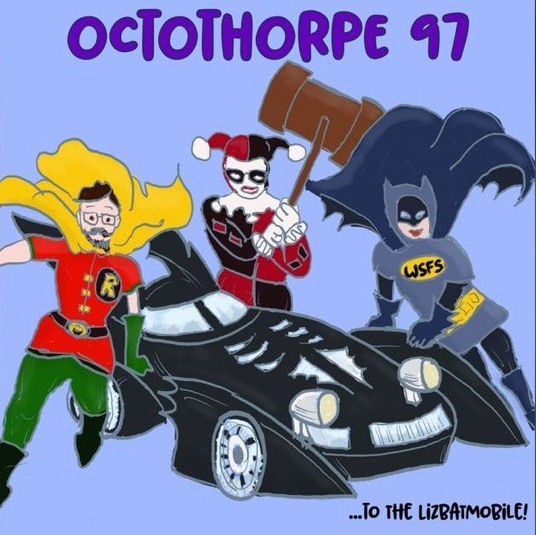
(12) BRING ME THE HEAD OF E.T. “An otherworldly auction full of cinematic sci-fi props will land in Beverly Hills” promises NBC Los Angeles.
…[December is] an eye-catching and otherworldly month, in other words, but sci-fi splendor and the heart of the holiday season don’t intertwine all that often, or as often as someone who adores both might wish.
But here’s some good news: That’s changing about a week ahead of Christmas when the “Robots, Wizards, Heroes & Aliens: Hollywood Legends” auction phones home at Julien’s Auctions in Beverly Hills.
Indeed, “phones homes” is a reference to a certain sweet space traveler, so you can bet you’ll spy E.T the Extra-Terrestrial, or rather an animatronic E.T. head, in the collection.
Other iconic additions to the line-up include a “Fantastic Voyage” ship, a Xenomorph head from “Aliens,” a “Back to the Future Part II” hoverboard, and the oh-so-cuddly Muffit II the daggit, a “Battlestar Galactica” favorite; Marvel and Harry Potter treasures will also be in the spotlight….

(13) THE ART IN ARTIFICIAL INTELLIGENCE. Nature tells readers “How AI is expanding art history”. (Don’t worry, nothing in here about “Nighthawks”.)
From identifying disputed artworks to reconstructing lost masterpieces, artificial intelligence is enriching how we interpret our cultural heritage.
Artificial intelligence (AI), machine learning and computer vision are revolutionizing research — from medicine and biology to Earth and space sciences. Now, it’s art history’s turn.
For decades, conventionally trained art scholars have been slow to take up computational analysis, dismissing it as too limited and simplistic. But, as I describe in my book Pixels and Paintings, out this month, algorithms are advancing fast, and dozens of studies are now proving the power of AI to shed new light on fine-art paintings and drawings.
For example, by analysing brush strokes, colour and style, AI-driven tools are revealing how artists’ understanding of the science of optics has helped them to convey light and perspective. Programs are recovering the appearance of lost or hidden artworks and even computing the ‘meanings’ of some paintings, by identifying symbols, for example…
(14) FIRE-AND-FORGET MATING TECHNIQUE. Butts with a mind of their own. Don’t tell me you haven’t seen this in fandom. “Why these sea worms detach their butts to reproduce” at Popular Science.
Bye bye, butt
Some segmented sea worms like the syllid worm go through a reproductive process called stolonization. The stolon is the worm’s posterior organ and it is full of eggs or sperm depending on the worm’s sex. During stolonization, the stolon completely detaches from the rest of the worm’s body for reproduction.
This detached butt swims around by itself and spawns when it meets another stolon of the opposite sex. This autonomous swimming is believed to protect the original body of the worm from dangers in the environment and help the eggs and sperm travel longer distances.
In order to swim by themselves, the stolon have to develop their own eyes, antennae, and swimming bristles while still attached to their original body. How this happens has been a mystery. The formation of the stolon itself begins when the gonads near the worm’s butt mature. A head is then formed in the front of the developing stolon, with the eyes, antennae, and swimming bristles following close behind. It develops its nerves and the ability to sense and behave independently before the stolon detaches from the rest of the body….
(15) VIDEO OF THE DAY. John King Tarpinian found this old Tonight Show clip on YouTube: “Paul Williams Arrives Straight From Filming ‘Battle for the Planet of the Apes’”.
[Thanks to SF Concatenation’s Jonathan Cowie, Mike Kennedy, Andrew Porter, Ersatz Culture, Lise Andreasen, Steven French, John King Tarpinian, Chris Barkley, and Cat Eldridge for some of these stories. Title credit belongs to File 770 contributing editor of the day Daniel Dern.]

